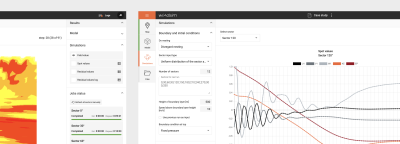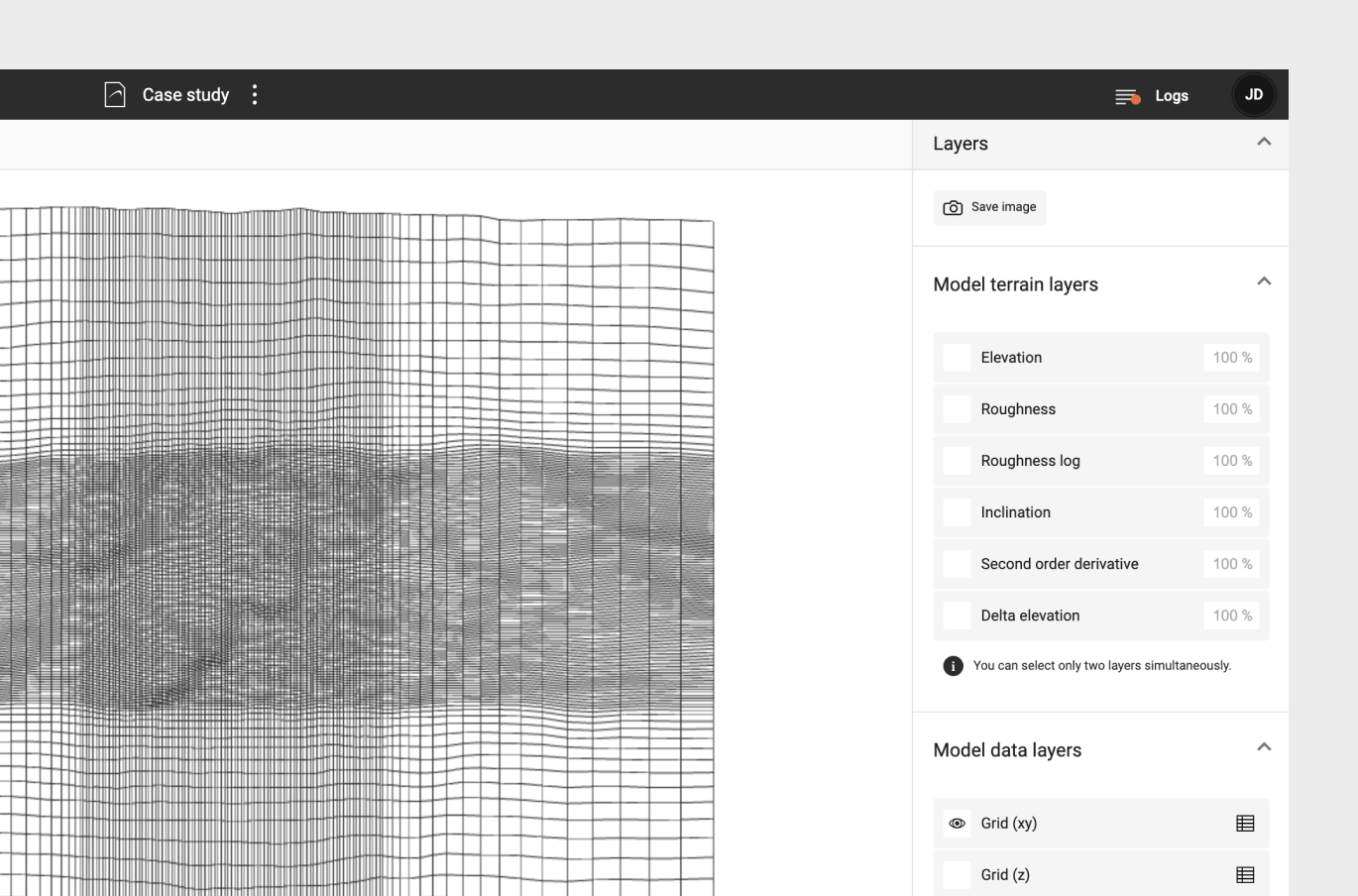WindSim: From desktop to the cloud

Transforming a complex wind power industry solution from stand-alone desktop application to a cloud-enabled platform.
About the project
WindSim is a Norwegian company operating in the wind power industry. They use computational fluid dynamics(CFD) technology to optimise the placement of wind turbines, making it far more profitable. WindSim helps their clients with advanced simulations and data visualisation tools.
They decided to move their entire infrastructure and service to the cloud environment. NoA Ignite came in to facilitate this transition.
Technologies
- Angular
- .NET Core
- Typescript
- Azure
- Docker
- Three.js
- Chart.js
- Global Mapper SDK
Team
- UX Designer | Project Manager
- UI Designer
- Frontend Developer
- Full Stack Developer

The challenge: Building a cloud-based service from scratch
As we were dealing with a mature product, moving to a cloud environment was a multi-faceted challenge. Almost everything would have to be designed from scratch or at least rethought. The scope of our responsibility was quite extensive. We took on:
- Project management
- Visual and interaction design
- Technical architecture
- Development and integrations
First off, our role was to design new user flows and a new interface that would allow for these interactions. This meant that we had to incorporate new data visualisation tools, which play a crucial role in WindSim’s work. Since everything had to be cloud-friendly, there were a few cases where we had to come up with an entirely new solution for previous tools that were only available on-premises.
Next, we had to integrate the global data services. The amount of data that flows through WindSim’s IT infrastructure is simply overwhelming. Some of the data points they are gathering and analysing concern weather conditions, climate, terrain, wind speed, proximity to the transmission lines, land use restrictions, environmental concerns and hazards, road access and even the proximity to residential areas. This results in gigabytes of both structured and unstructured data.
Finally, we had to integrate the new cloud-based environment with the existing support and back-end services bysetting up a brand new collaborative model in the cloud environment. The last stage of our work was to assign and manage roles within the new application and organise workflows between team members.
Our approach: A roadmap
This type of complex project requires a lot of planning and strategising, so we started in the usual way – with kick-off workshops. At NoA Ignite, we are huge fans of workshops and interactive meetings. It’s one of our recipes for success. We look at every project from many different perspectives. With this approach, we can map a wide range of challenges and quickly come up with effective solutions.
In this project, it was crucial to fully grasp the complexity of CFD calculations. CFD stands for computational fluid dynamics, a complex solution that uses numerical analysis and data structures to analyse and solve problems that involve fluid flow (including wind). CFD helps companies like WindSim to predict the wind power potential of a specific wind farm. It is the backbone of their everyday work.
We agreed upon a roadmap and created an minimum viable product (MVP) version of their new solution. A MVP comes in handy, particularly when you want to design something new or innovative. This way, the client can see what the project will look like and how it will work before it is developed. This way the suggested product can be validated before making the big financial investment of development. This is the path we took with WindSim.
Our team conducted a comprehensive technology research in order to find the best possible solutions and tools. By using an iterative design approach, we shaped the final cloud environment in several sprints. And, of course, there was a lot of testing along the way.
The result: A fully-fledged cloud-based IT environment
Our approach proved to be effective and we ended up with a working MVP version. With our client’s approval under our belts, we made sure that backend, data visualisation and global data services were fully operational and working as agreed. The final result of our work was a user-tested solution that works entirely in the cloud and matches all the client's requirements.
Currently, NoA Ignite is developing the entire infrastructure for WindSim. We are implementing the necessary improvements and handling potential glitches. We're also working on some new features that will make WindSim's environment even more useful in the near future.
Any questions?
Contact us!

Szymon Heliosz
Senior UX Designer & Customer Experience Strategist
Szymon is our man with a plan. His extensive 15-year experience in UX design, business strategy, and client development means he’s more than earned his stripes in leading and shaping user-centric strategies. Far from being a dictator, Szymon excels by connecting the dots between stakeholders. His ability to facilitate insightful interviews means he delivers what your business needs, not what you think it needs.
Our services

Strategy and Innovation
- Digital Strategy
- Innovation Process
- Content Strategy
- Technical advisory
- Ecommerce strategy

Experience Design
- Audit & Research
- Customer Journey Mapping
- Prototyping and User Testing
- UX & UI Design
- Copywriting & Content translation
- UX writing

Enterprise CMS
- CMS advisory, platform selection
- Web development
- 24/7 Support and Customer Success support

Digital Experience Platforms (DXP)
- Platform strategy & architecture
- Cloud services
- Customer Data & personalisation
- Data & Integrations
- Analytics & optimisations





